Once on my birthday a sweet girl named Anyuta brought me a gift—a book entitled “We are Tiny Letters” (2001) with Herman Lukomnikov’s poems and Asya Flitman’s illustrations. The book was really small, but so compact with pictures and words that there was simply no room left over for any emptiness or double meaning. It looked so strange for the local Minsk habitat that I couldn’t help but wonder about such a marvel’s origin. It turned out that the creature came form Moscow. The book has been at my desk ever since—I wouldn’t dare and carry them with me due to their “exceptional artistic value.”
A couple of years later when I was already living in Prague—in complete ambiguity—I once complained on my Live Journal blog how I miss my books left behind in Belarus, and especially the dearest and the liveliest of them—such as “The Tiny Letters.” Suddenly I received a comment form Asya Flitman with an invitation to visit her when in Moscow and get a new copy of “The Tiny Letters” from her. A most detailed “plan” instructing on “how to get to the place” was “annexed” to the invitation, and I kept reading this !plan” over and over—whenever I needed a little warmth.Reality is punctually reflected in a “plan”—a fire tower of striking beauty, a lengthy yellow hospital wall, the paths and Asya’s window “for shouting or throwing a snowball at.” Indeed, the world around her seemed to be inhabited by all the characters of her works—crows, dogs, birds, cats. “Why SEEMED?” you would wonder.
“The world IS full of as many cats as you wish—all those dogs and such trivial and useless things.” But a miracle happened—all the creatures were suddenly animated and personified, as if seen by a child. The world was losing its harsh contours and hard edges and gradually becoming a little fuzzy and warm, cozy and sleepy, meditative and shiny.
Asya lives in a tiny Moscow apartment crowded with pictures from floor to ceiling. As with “The Letters” the clutter makes the space appear larger than it is. From her window she can see a long stone wall painted yellow that encloses a mental hospital; it appears in many of her works. And she can see only a smidgeon of sky, which explains why she incessantly seeks it out, locating as much as she can within her paintings. The people in her pictures are often gazing up at the sky: The Mental Patients on a Promenade (those living beyond the yellow hospital wall), Watching the Salute—the image of people living, “people in white gowns,” a cliché for “doctors” in Russian—walk with their faces and eyes upwards; they live beyond the Yellow Hospital Wall too and apparently do not differ much from their patients. They all share the “normal” human wishes—to see the sky, to gaze at the fireworks, to stare at birds. Or just to stare.
Gazing really is Asya’s favorite pastime; indeed, painting proceeds from one’s curiosity, it is secondary to staring.
Asya speaking:
…they have asked me several times recently: how did you start painting? I gave some thought to this…
As far as I can recall I have always painted. I mean, I started painting as all children do, and then, maybe when I was about fourteen, I suddenly noticed a towel hanging from a hook in the bathroom—in some sort of a cone, you know. I saw it and realized how this could be drawn. Ever since that day I started to see all sorts of lines everywhere around me and kept trying to depict them. I was particularly amazed by lines. I also liked movements, discreet movements of body, the sculptural. Although I’ve always been rather sluggish and awkward, I saw and felt the movements well, and tried to picture them. I attended a math school and made very little progress since I was keen on things absolutely different from those they tried to teach me. I couldn’t concentrate on anything “on demand.” Well, it is not at all clear how a person can be taught something while everyone appears to live according to their own inner laws.
I remember once attending a class—it could have been in mathematics—and the very wise teacher was going on and on about something that could have been quite important and interesting. But I couldn’t listen to him at all and I remember neither the point of the lecture, nor my classmates. All I can recall is very intensive work that was taking place at the same time—within me. Instead of listening and taking notes I would draw people, as if trying to express something with the help of people’s figures. Or perhaps I needed to express some feeling sculpturally, with the figure—laconic enough without details but as sort of a hieroglyph that would show everything by its pose. I made several drafts and gradually achieved this:
I remember that intensive inner process very well. I remember well how this pose came about. It had to express strain, despair and desire, humility and hope. By the way, I didn’t know then that there exists such a devotional pose, called proskineza (or prostration: a down-to-earth blow). But this figure expressed my inner feeling best of all, and I was really happy when I finally found it. I still treasure this sketch on a sheet of school notebook paper. God, what a poor student I was! But what could they teach me when something was constantly happening inside of me—something having nothing in common with the studies?
How does exterior life correlate with the inner?
This question intrigues Asya most of all. Observations on this correlation, and attempts to express it in paintings, are central to her world and her everyday life. Remarkable is her talent to combine the child’s eternal astonishment with the wisdom of the elderly, who are—I wholeheartedly agree—the most beautiful people on the earth. Asya collects their photos, clips them from old magazines and sticks them in albums. And in every little feature of these faces I recognize the wisdom and kind-hearted sincerity of hers.
Asya would never approve any attempt to write anything pompous about her, making use mostly of untethered sentences. That said, I’d write something like this about her:
Moscow looks gloomy. The skies are gray and heavy; mornings don’t seem to come at all, and it drizzles all the time. It’s cold. Drenched birds hide under the cornices; in Asya’s flat it’s warm. All things here are so small, but with the plentitude of it all–the paintings, the faces—enlarges the room and makes it all snuggle cozily. Right off the bat, the newcomer is given a pair of slippers and beckoned to the kitchen for tea. The tea contains herbs, the cheese has holes and both are most delicious. The bathroom is occupied by a potted plant permanently relishing in the electrical light which is specially switched on for it there. The door cracks open and there appears Herman Lukomnikov’s dark shaggy head in the kitchen. The head asks piteously: “Asya, may I have some more soup?” Asya answers that yes, of course, he may, but he should divide the meatballs in the soup for two meals—dinner and supper.
Asya calls forth the words of Sasha Sokolov: “We, Russians, are a bookish nation.” In Asya’s home, everything is literature and she herself is a distinct representative of the natural intelligentsia tribe; she's got neither highbrow transcendentalism nor neurotic pride, and hasn't pitiful complex of “a kitchen intellect.” Instead, she has an inherent wisdom and sincerity that can not be taught.
Asya is a great storyteller. As a person capable of unearthing all things unusual in any environment, she keeps uncovering the otherwise unseen by others, even in the simplest and most trivial things. Most of her stories begin with the word “Once…” For instance, once when Asya had to wait for me near the entrance to a Moscow metro station, she sat in a car as I was very late; she kept watching people emerging from the metro and all the feet passing her car. I was really sorry when I finally arrived utterly apologetic, but Asya told me that she was enjoying herself. Later she painted the picture By the Metro or 23 Feet.
All her works are literature as well. They all consist of separate stories. Some of her paintings and writings look hagiographic—the narration is done “window-by-window.” Asya herself would rather compare her stories with educational visual aids that clearly demonstrate that there’s a watermelon here and that’s a man there in no hurry. One such work of Asya is a painting inspired by Andrew Monastyrsky’s poems..
After you get out of the Sokolniki metro station
you can either walk (7 – 10 min.)
(follow the yellow arrows on the plan)
or make a couple of stops by trolleybus
(14, 41, 32)
(the orange arrows)
you have to take a trolley near a fire tower of a remarkable beauty
then there will be the trolleybus stop there called “The Rusakov Cultural Centre” which is a monument of constructivism
then there will be the stop “Korolenko Street” there
there you have to get out and make 50 steps backwards to the crosswalk
(to tell the truth the crosswalk lacks a traffic light and is not meant for the weak-nerved)
while the weak-nerved might walk 20 steps forward – there’s a traffic-lighted crosswalk there
and then go backwards along the proper side of the street
from the wide street called Stromynka
along which there go buses trolleybuses and trams
a small street springs off called “Malaya Ostroumovskaya”
you have to walk it through
this will take you about 200 steps I believe
a yellow hospital fence stretches along the whole left side of the street
you have to turn to the left together with the fence and there in 50 – 70 steps
on the opposite side of the street there will be my home –
in a pinkish brick house having 6 or 7 floors
it’s building 13 at Bolshaya Ostroumovskaya Street
I am on the ground floor in flat 20
but there’s no intercom in my flat
that is why you will have to shout at the window first
(if my phone is switched off)
(if my phone is switched on you can phone me when you are at the entrance and I will come out and open the door)
my window is on the ground floor
right in the middle of the house
a dying grass verge stretches along the whole house
and right in its middle this atrophied grass verge is crossed by an asphalted path
leading directly to my window
you should come up and shout: “Asya!”
or throw a snowball against the window if it’s winter
or knock with a stick
and if the window is not closed
if it is not too cold
you don’t even need to shout loudly – just say it distinctly
I will hear you
then I will look out of the window and wave you a welcome
go round the house then
enter the middle entrance
and visit me :)
you’d better not come in the morning
I’d rather you came after 2 – 3 p.m.
http://npocmo-mak.livejournal.com/2007/01/04/
1.
A boy is running along the street.
He has a candle in his hand.
A wheel is rolling in front of him.
There is a small horse on the wheel.
2.
Children are sitting on a bench.
One of them has a boat
on his head.
A small flag sticks out of the boat.
A small fir-tree grows nearby.
3.
A short column is driven in
into the ground.
An old granny is standing on the column
on one foot.
She has a small flag in her hand.
Nearby on the ground
a bird is lying on its back,
with a long nose,
with a bossy belly.
4.
A steam loco is running across the field.
A wheel is rolling in front of it.
a bird is standing on the wheel.
a string is tied to the loco.
a small bell is tied to the string.
the bell is held by big fish.
5.
A small flag grows out of the field.
nearby a millipede beetle
is lying on its back.
A boy is running towards the beetle.
He has a knife in his hand,
he has a small wheel on his head.
6.
A bird is standing on a small hill.
a string is tied to the bird.
a boat is tied to the string.
An old granny is standing in the boat,
she has a small flag in her hand.
7.
An arrow grows out of the ground.
A string is tied to the arrow,
a boy is tied to the string.
He has a small boat on his head.
He has a small flag in his hand.
Near the boy on the ground
a bird is lies on its back.
8.
There is a small man standing
with a big broom.
Nearby there is a huge rat.
A long narrow flag
grows out of it.
9.
There is a haystack standing on the field.
A boy is sliding down the stack.
There is a bench nearby.
A millipede beetle is lying on it
on its back.
A small flag sticks out of the beetle.
10.
A girl stands on a little hill.
Downwards, near the hill, there is a boy.
He has a brick in his hand.
He shows it to the girl.
Behind the boy, out of the ground,
there grows a thick arrow.
11.
There is a small boat
standing on a little hill.
A girl stands near the hill,
a bit bigger than the boat.
she has a little knife in her hand.
An arrow is attached
to the sail of the boat.
A string is tied
to the end of the arrow.
A small horse with a cart
is tied to the string.
a small flag sticks out of the cart.
Her narratives are always stories from real life. But when she presents them in words and paintings they are transformed as imaginative writing in the literal sense of these words.
Militiamen and Til; True stories:
5. Once, Til was taken to the militia. On the way to the militia Til asked a militiaman to show his personal identification card and began to add up the numbers from the militiaman’s ID out loud. Having finished his calculations, Til returned the ID to the militiaman and informed him joyfully, “The sum of the figures in your personal ID number is equal to 19.”
The militiaman gave a thought to this. When they reached the militia station the militiaman turned the key in the lock, opened the door, poured some tea in a cup, took off his overcoat, and then asked Til excitedly, “And what does that mean?”
“According to the ancient books the figures in a militiaman’s ID number tell us about his destiny and character,” Til explained.
“What sort of belief is this? Tell me about it,” the militiaman asked.
“This is the belief in numbers, in the harmony of higher spheres, in music. Pythagoras, an ancient Greek, is its prophet. Everything in this world happens according to the laws of truth, harmony, order and mercy, and even the tea leaves in your cup of tea obey the law. Everything has its number that enables it to have its place in the world and in music and to interrelate with other notes, numbers and creatures,” said Til.
“And what is the meaning of my number?”
“You are a good person. You have a big dog at home. You love discipline. Recently, you have faced the need in accommodation and money. You don’t like this job very much. You like music better. You are ashamed of the fact that sometimes you torture people.”
“This is true,” the militiaman said. “Is this really written in my ID card?”
“I don’t know, said Til. “But this is what the ancients say.”
The militiaman gave this another thought and had some tea.
“Well, I’ll probably change my job,” he said. “Do come again,” he added and he opened the door.
8. Once Til brought his photo to the militia—for his Passport. He was pictured with his hair hanging form one side, with a match in his beard, with a flower behind his ear, with a bunch of flowers in the pocket of his shirt, with a bird’s feather and a burning candle in his hands. The Photographer who made this photo simply admired it. He would applaud and shout: “A passport photo! A passport photo!! Do come again!!!”
But in the militia station they were surprised and said:
“This is an artistic photo, but we need a passport photo.”
Nevertheless, they laughed a lot and admitted it.
6. Once, Til found a dilapidated baby carriage. He rode it for an entire night and then he fell asleep right in the street with the pram frame nearby. In the morning Til opened his eyes and saw the blue sky and birds flying in it, and heard alarm-clocks ringing from every window. He also saw three cops that bent over him. The militiamen said mockingly
“Get up, Sir. Fire!”
“You probably haven’t any documents…”
“No,” Til said.
“…nor accommodation…”
“At present, no,” answered Til.
“… and you must be a drug addict.”
“No, I am an inventor.”
“And what did you invent?”
“I invented the machine that I called a ‘Questionertron,’” Til suggested, caressing the wrecked pram.
“And how does it work?”
“If a man has no questions to ask, he will pass by, but if he has any he is sure to come up and ask them. The machine will attract him.”
“And what do you need it for?”
“Well, guys, what he is trying to say is just we are digging deep in vain here.”
“Is that what you meant?”
“Well, yes,” Til said. The militiamen laughed, apologized and went out.
10. Once a militiaman came up to Til and said, “Let me take you to the militia station.” Til asked for the reason.
“It’s too cold to keep guard,” the militiaman explained
“OK,” Til agreed, and they went to the station.
15. Once Til was in a metro walkway, hopping from one step to the next, just for fun; he held a beautiful umbrella, opened.
A militiaman snuck up behind Til, about to catch him. But Til caught sight of him at the corner of his eye and leaped about, as if dancing, with his back still turned to the man chasing after him. Finally Til stopped and the militiaman seized his elbows from behind. They stood like that for some time. Then the militiaman tried to turn Til harshly around, but Til spun in the same direction in which the militiaman was tugging him such that the militiaman still remained behind Til’s back holding Til’s elbows. Then the militiaman began to twist one of Til’s arms hoping to make Till turn around in that way.
But trying to avoid any pain, Til began to revolve around the militiaman, ballet-style, and even attempted to revolve the militiaman around himself, but in a much less smooth manner. All the while Til avoided looking at the militiaman, he keenly and elegantly manipulated the umbrella with his other liberated hand.
It looked like Til and the militiaman were two friends who had arranged a strange and beautiful dance before hand and were now dancing some sort of a tango in carnival costumes. A crowd gathered around them and started applauding. The people laughed loud, shouting “Bravo!”
Finally the militiaman twisted poor Til’s arm so far that Til had to drop the umbrella, fall down on the floor and lie on his stomach, so that the militiaman fell over him. Then, Til took out some paper and a pencil and began to draw a little house, a giraffe and the sun. The people around started to wonder what was going on. The militiaman was embarrassed and shouted, “Can’t you see? He is a drug addict!”
“You are a drug addict yourself,” retorted the crowd.
Then the Militiaman put a strict expression on his face and pretended in front of the crowd that he was going to take Til to the militia station. But at the same time he told Til: “My name is Vitya.”
They both felt at ease, though ashamed of the action they had performed. They apologized to each other, wished one another happiness and each went on their own way. Til closed his umbrella and caught his train.
***
I would like to conclude with a story about Asya herself,
about a woman who came down from the mountains.
Once, in the metro, I saw such a marvelous old lady!
I haven’t forgotten her over the years.
She was gorgeous.
First of all, she was a stunning
somewhat southern woman,
perhaps Georgian or maybe not.
Her face was longish
but mainly it was her eyes and their expression
seen in beautiful women,
but an unkind sort of beauty
is widely adopted and occurs more frequently
while in this old lady it was kindness itself.
Also, she gave off the impression
that she either had just came down from the mountains,
or had just escaped from jail.
No mask was on her face,
no protective layer.
Everyone in the metro and in the whole town
seemed to be hiding “in a tank” or “behind a stone wall.”
Well—you understand.
Practically everyone wears a mask of alienation.
The combination of this total openness, with beauty sweetness and astonishment
—this was incredible.
Maybe such an unusual expression was brought about by her son
who was accompanying her,
probably an adult already,
a southern man as well,
with facial features like his mother
he was quite an ordinary man,
not the most handsome,
with that mask of alienation.
Maybe this was the first time she emerged from her mountain village
to visit her son who had made his way in life
yet he managed to get angry with her.
That was incredible;
you shouldn’t be angry with such a sweet and insanely beautiful creature
even if it is your own mother.
But he somehow managed to.
I was sitting across;
I couldn’t help staring at her.
I smiled at her
I wanted to tell her,
'Don’t be sorry because of your son.’
I pronounced this in my mind.
What else could I have done?
I wish I could see her always
***
According to Russian tradition Asya is a person who may be called “a person of God.” She herself is the only person who can describe many of the things that have happened to her, those deep emotions and revelations that she has experienced. Being uncertain about the ethics of publishing all of these, I refer you to the pages of her Russian-language journal:
http://npocmo-mak.livejournal.com,
http://odnajdy.livejournal.com








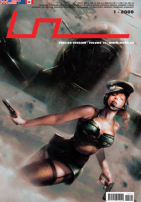













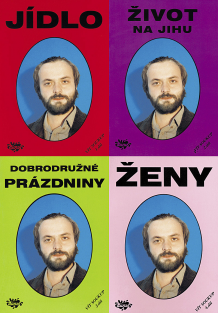




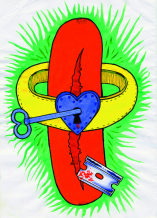
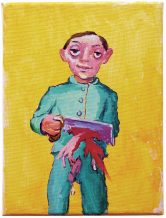
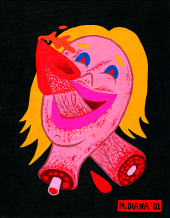
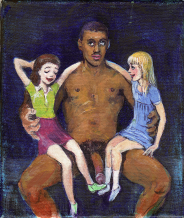


 New book by I.M.Jirous in English at our online bookshop.
New book by I.M.Jirous in English at our online bookshop.
Комментарии
Статья не была прокомментированаДобавить новый комментарий